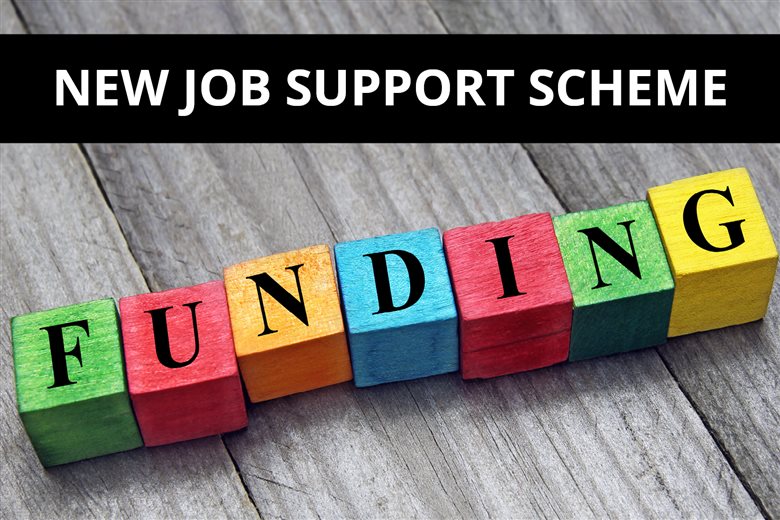COVID-19 round-up
Job Support Scheme
The Winter Economy Plan unveiled the Job Support Scheme (JSS). This succeeds the current ‘furlough’ scheme (Coronavirus Job Retention Scheme), which ends on 31 October 2020.
As employers face tough decisions about the size of the workforce they can maintain in current trading conditions, the JSS provides the option to keep employees on, albeit on shorter hours, rather than making redundancies. It is based on a three-way split: the government and employer together cover a proportion of the wages for time not worked, whilst employees suffer a wage reduction, but keep their job. The JSS opens on 1 November 2020 and runs to 30 April 2021. Claims can be made (in arrears) from 8 December 2020. The government has said it will review the terms of the scheme in January.
Like the furlough scheme, it’s administratively demanding. There are two pathways: one for businesses operating but experiencing lower demand – JSS Open; and another for businesses legally required to close their premises because of Covid-19 restrictions – JSS Closed. As employer, you can access either scheme if you have a UK bank account and a UK PAYE scheme. It’s not necessary previously to have used the furlough scheme. You can claim for employees who were on your PAYE payroll between 6 April 2019 and 11.59pm on 23 September 2020. Subject to certain provisos, employees can be moved between schemes.
Some of the small print is the same for each scheme. It is a requirement of each, for example, that you can’t claim for any employee made redundant or serving a contractual or statutory notice period. There are also requirements around reaching agreement with employees about the changes to their work. With both schemes, you can choose to pay employees more than the specified minimum if you wish. But there are important differences, and additional rules, even as regards eligibility, and it is essential to check the detail of each scheme separately.
JSS Open
This is designed for employers facing decreased demand because of Covid-19. As you may know, it has already been revised to increase support available.
To use JSS Open, your employees must work a minimum of 20% of usual hours, for which you pay them as usual. For every hour not worked, you pay 5% of the usual hourly wage, up to a cap of £125; the government pays 61.7%, capped at £1,541.75 per month. Caps are based on a monthly reference salary of £3,125, and the calculations for ‘usual wages’ follow broadly the same logic as the furlough scheme. As employer, you also pay employer Class 1 National Insurance contributions (NICs) and pension contributions due on employee earnings, in full.
JSS Closed
This is designed to cover employee wages and payroll taxes for businesses legally required to close their premises because of Covid-19 restrictions set by any of the four UK governments. This includes premises restricted to delivery or collection-only services from their premises, but not those required to shut because of a specific workplace outbreak. Businesses must be instructed to cease, and actually cease work, for a minimum of seven days.
Here you cover any employer NICs and automatic enrolment pension contributions in full, but don’t then have to make any further contribution to wage costs. The grant per eligible employee is two thirds of their normal pay, up to a cap of £2,083.33 per month.
Further help
We have been able to provide only an overview here, and the small print is complex. HMRC guidance can be found by searching for ‘Job Support Scheme’ on gov.uk. Please don’t hesitate to contact us for further information.
Job Retention Bonus
The Job Retention Bonus provides support for employers keeping furloughed employees ‘in meaningful employment’ after the furlough scheme ends on 31 October 2020. If eligible, you can claim this alongside the JSS. Claims can be made between 15 February 2021 and 31 March 2021 when the scheme closes.
The Bonus is a one-off payment to you as an employer, on which you are taxable. Payment will be made from February 2021, comprising £1,000 for every employee whom you previously claimed for under the furlough scheme, so long as they remain continuously employed through to 31 January 2021. Eligible employees must earn at least £520 per month on average between 1 November 2020 and 31 January 2021 (a total of at least £1,560 across the three months). It can be paid if you’re a company director or other office holder meeting the criteria.
The Bonus is not payable for employees serving a contractual or statutory notice period that started before 1 February 2021 for the employer making a claim. HMRC advises that if there is any suggestion that claims under the furlough scheme have been fraudulently claimed or inflated, the Bonus will be withheld until the enquiry is completed.
Employer tip
HMRC is undertaking compliance activity into Covid-19 support schemes. Revisit claims under the furlough scheme to double-check all is well. Accurate record keeping for the furlough scheme, plus accurate, up to date payroll data are also essential to receipt of the Bonus.












